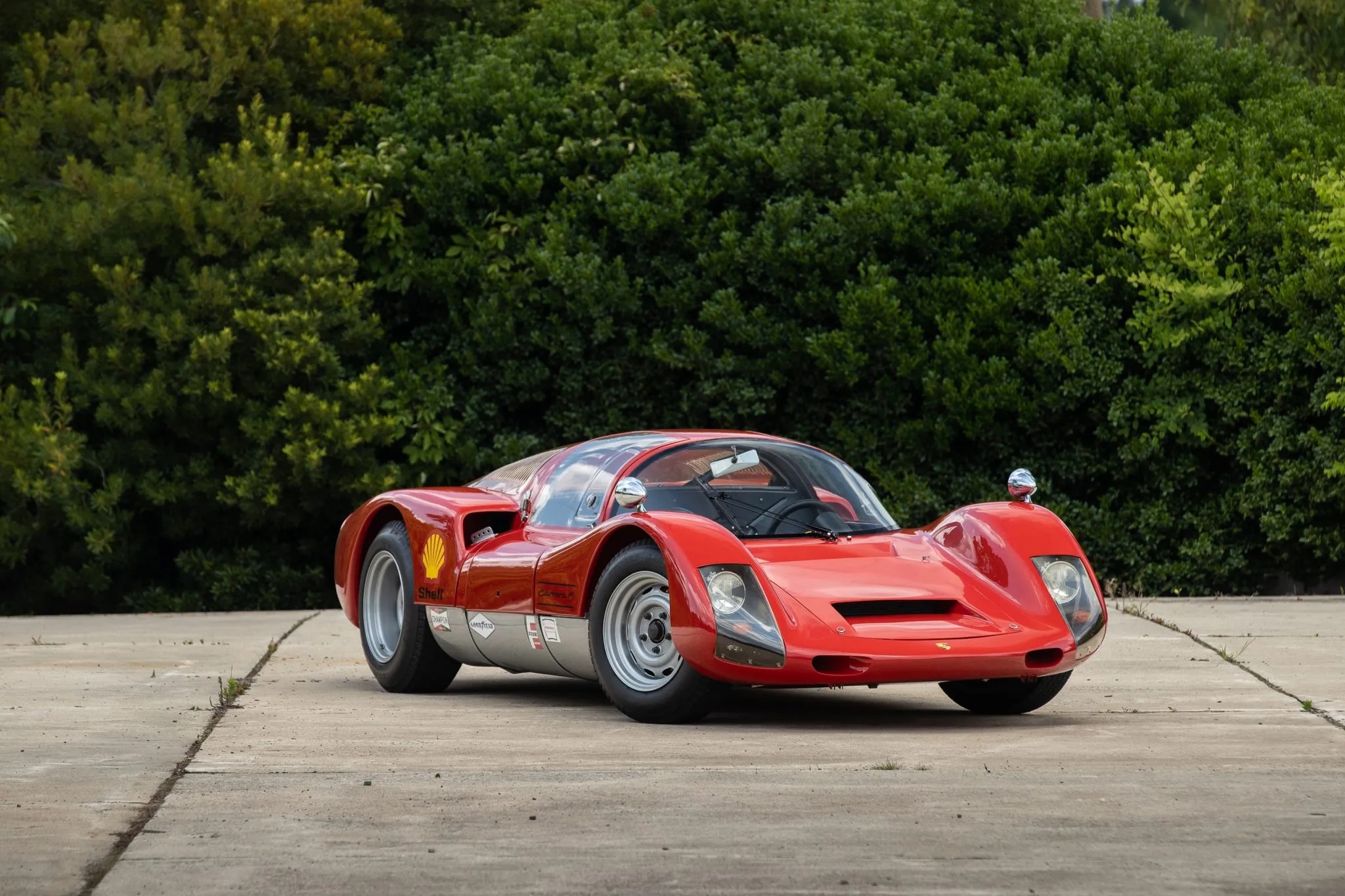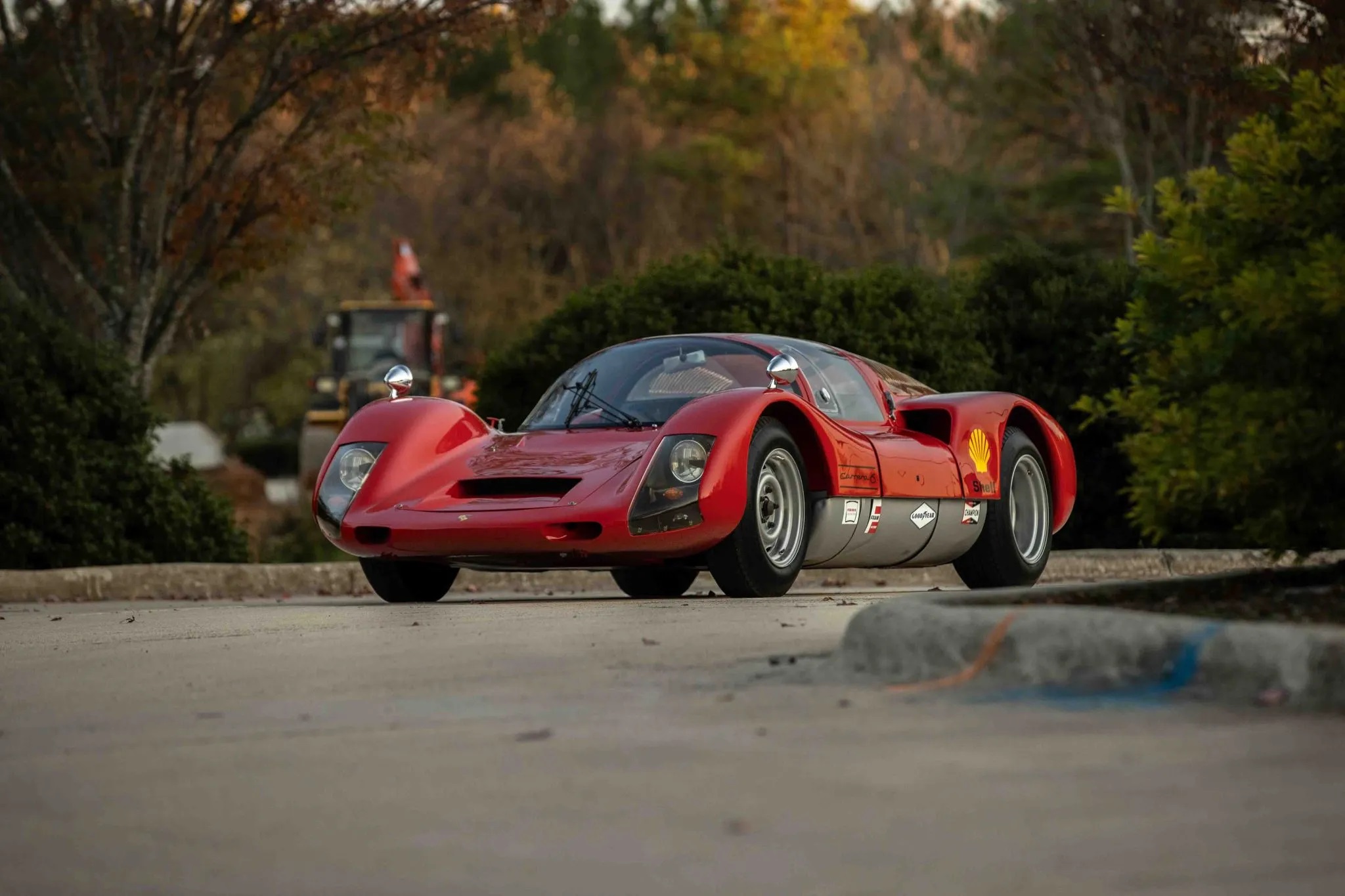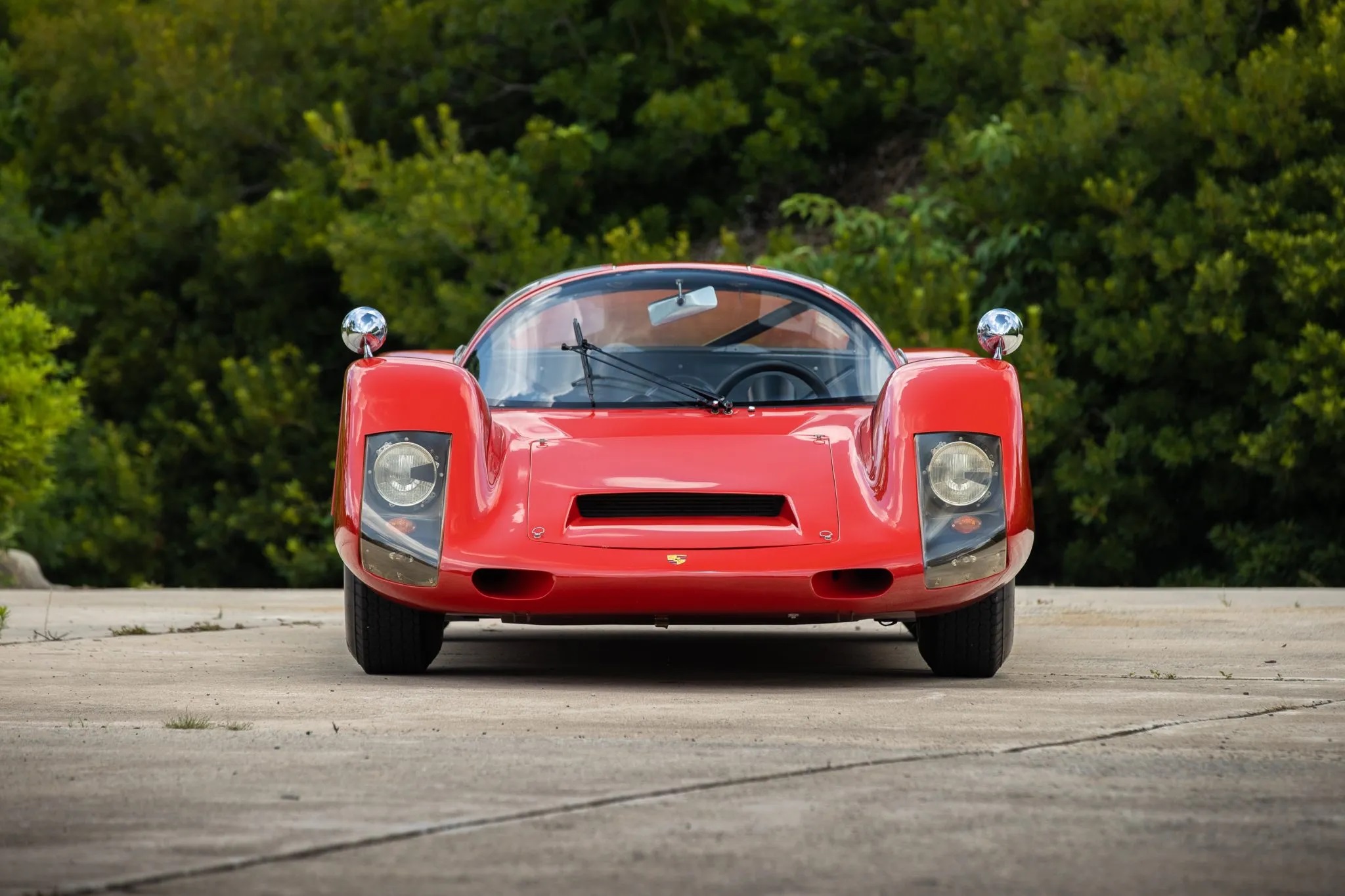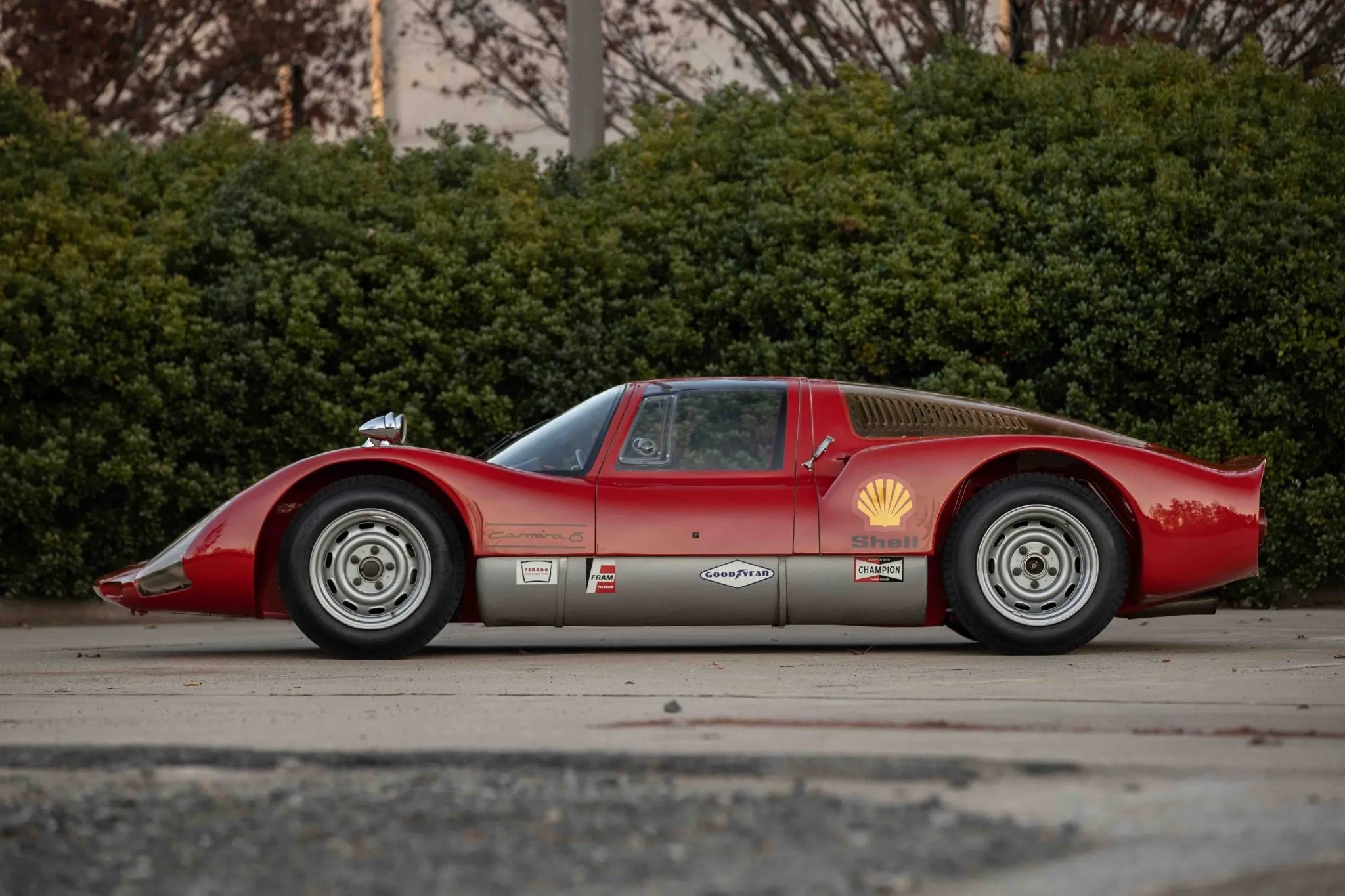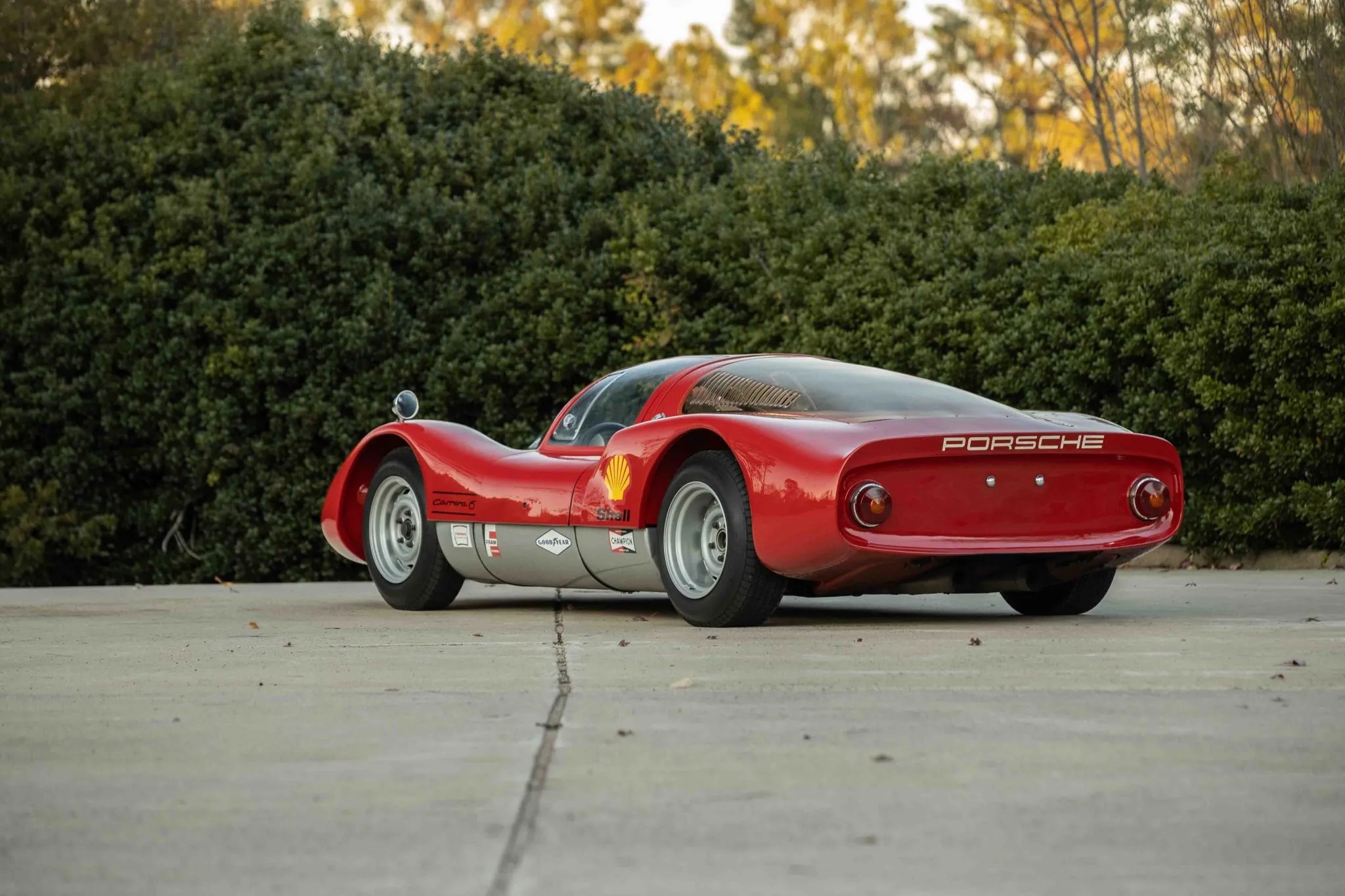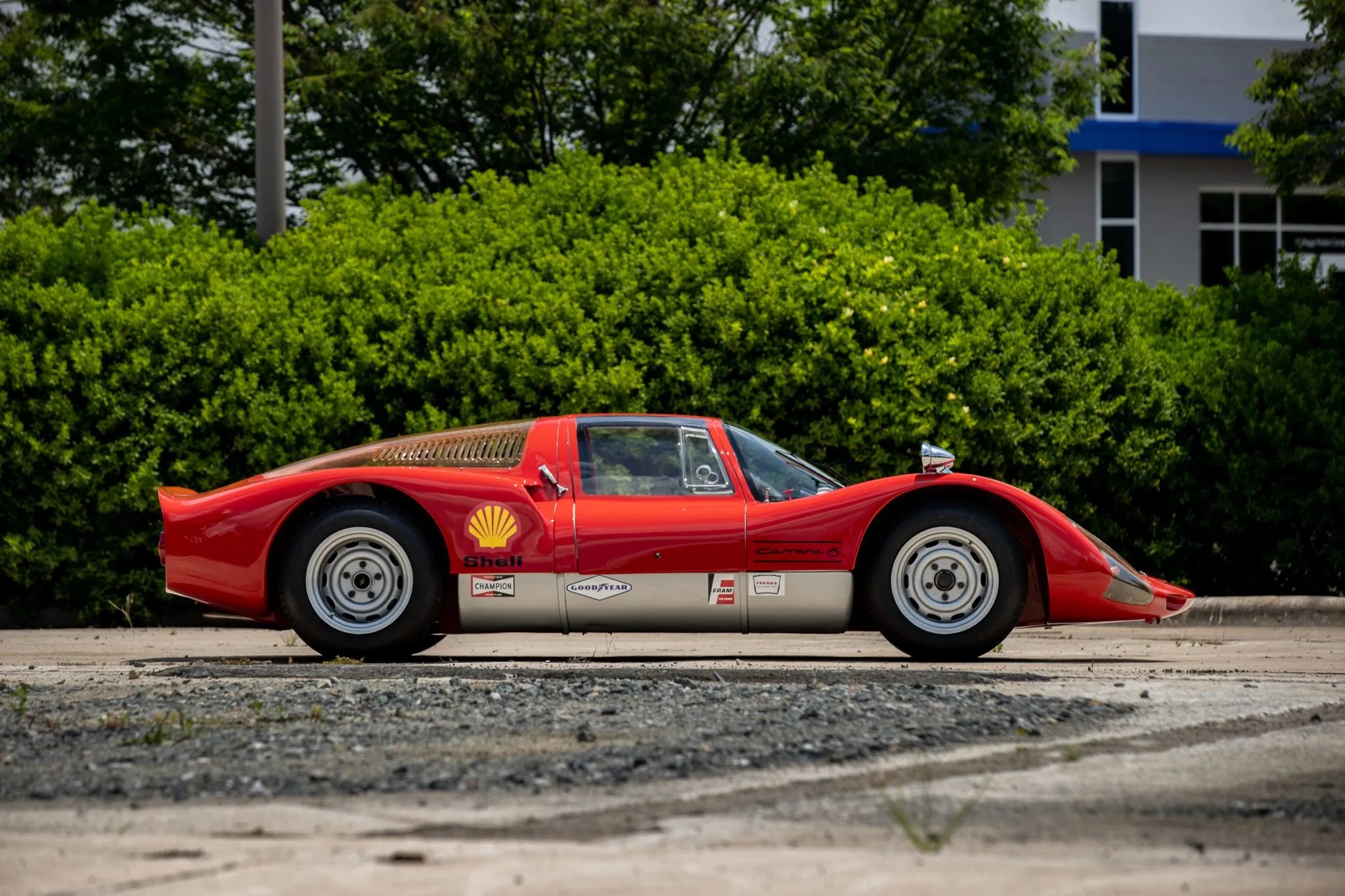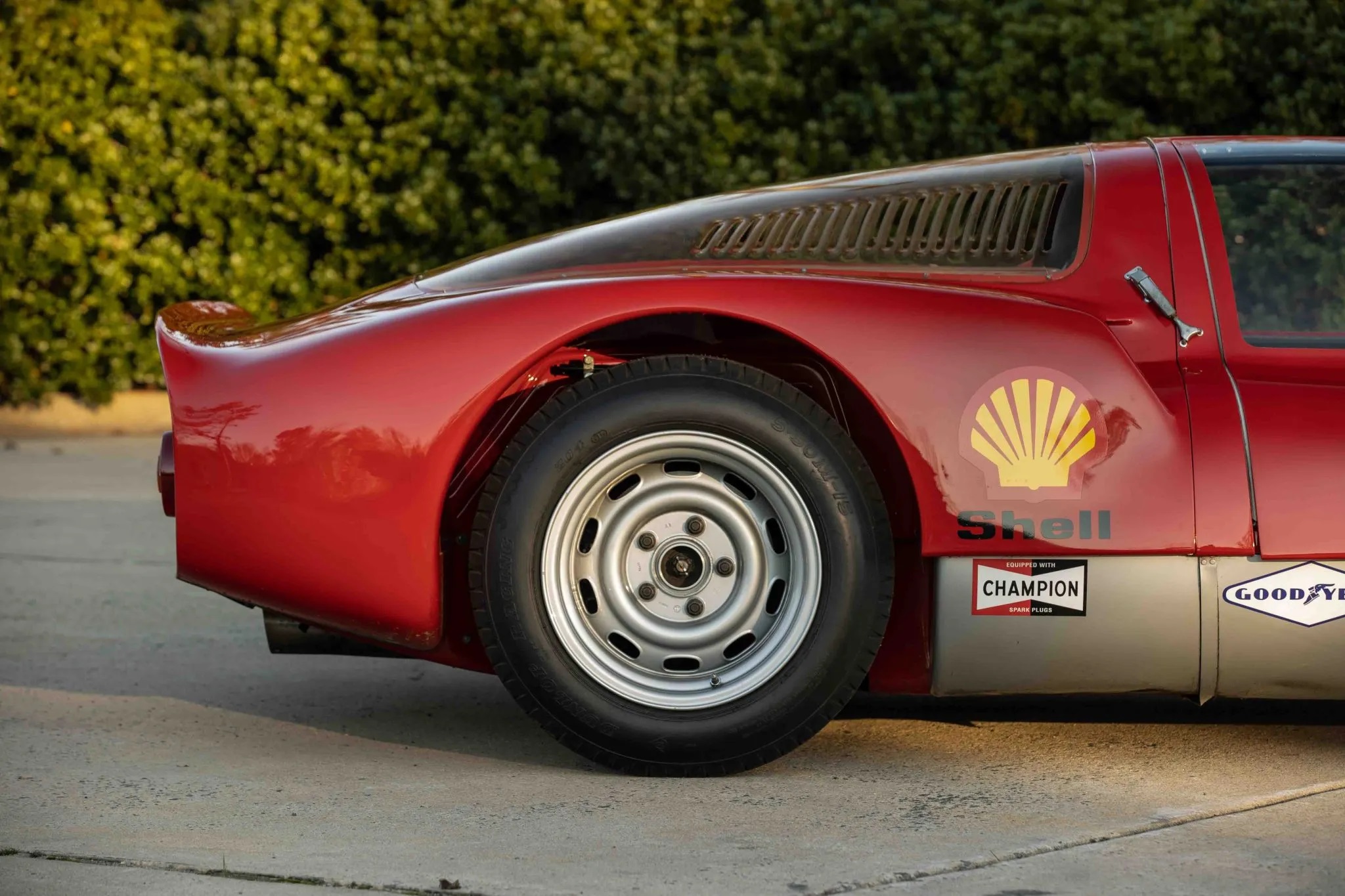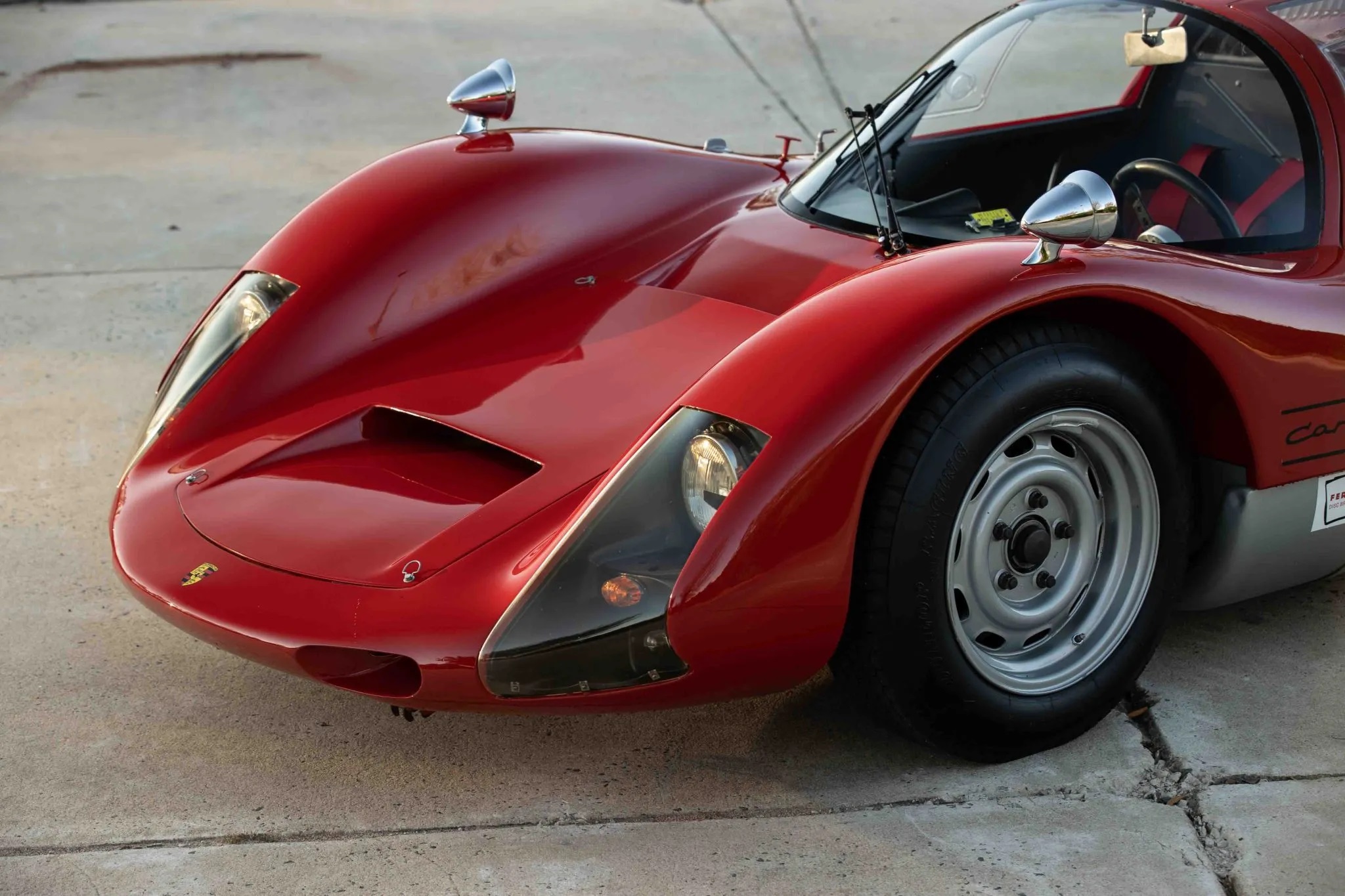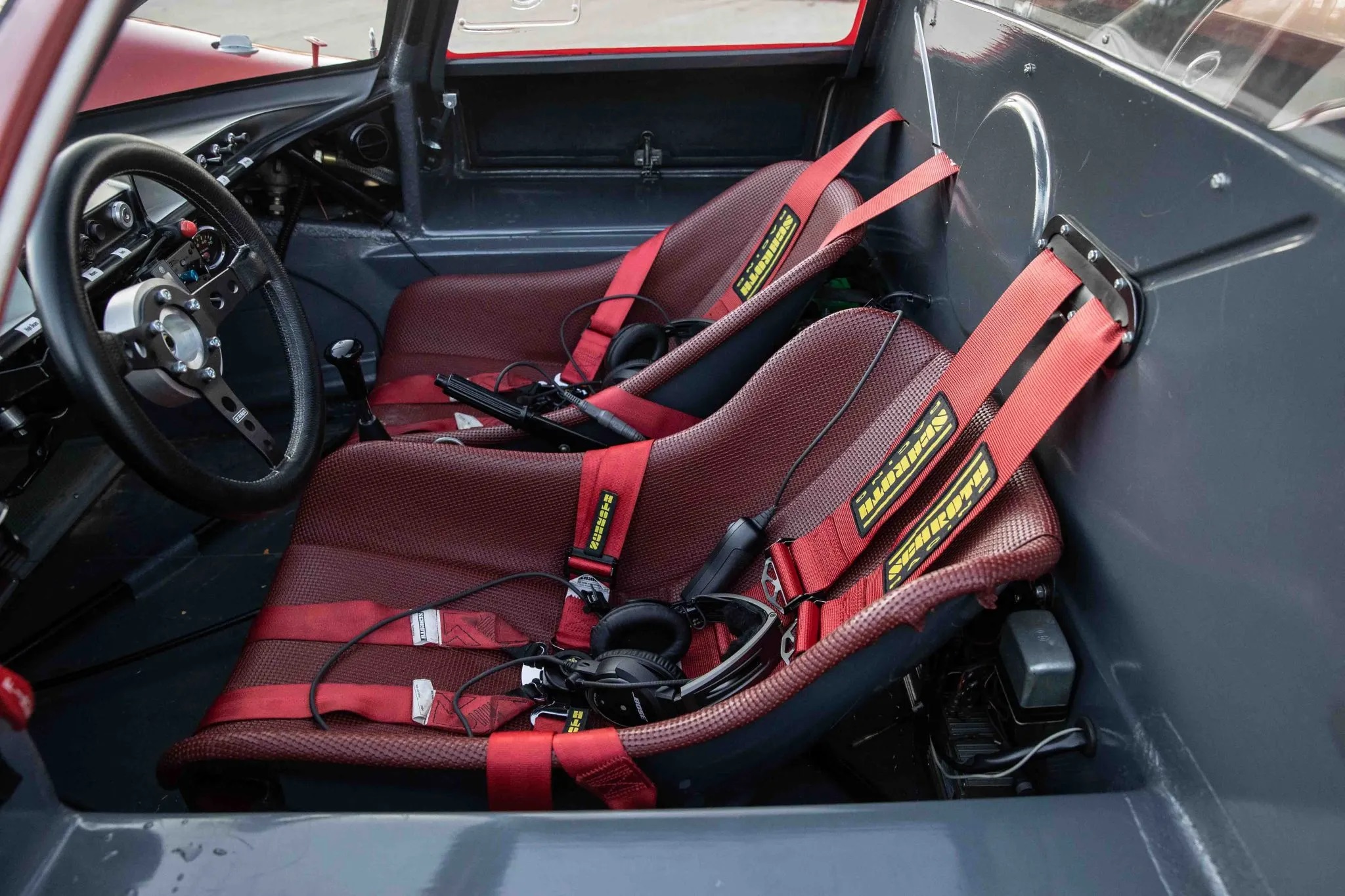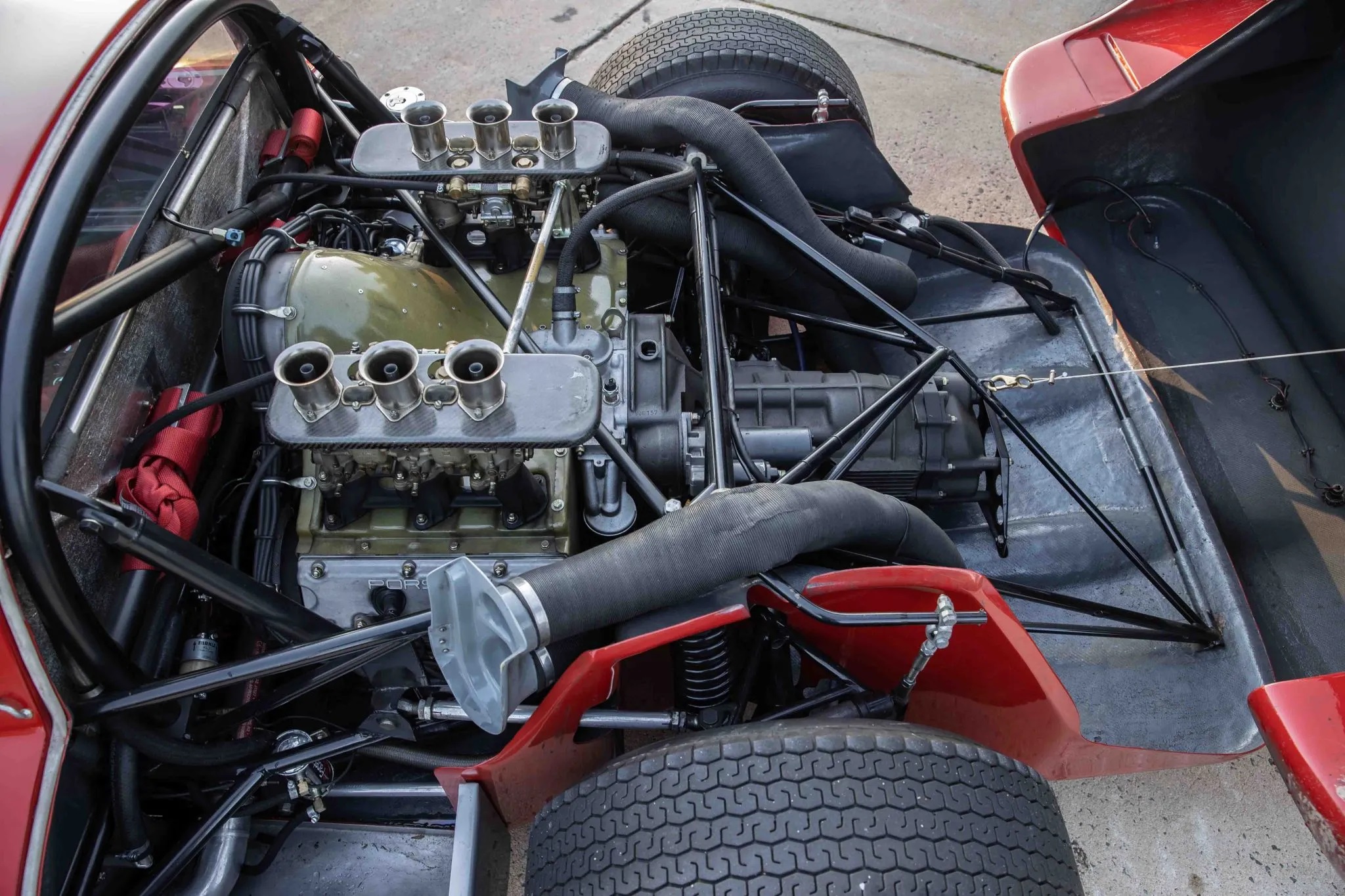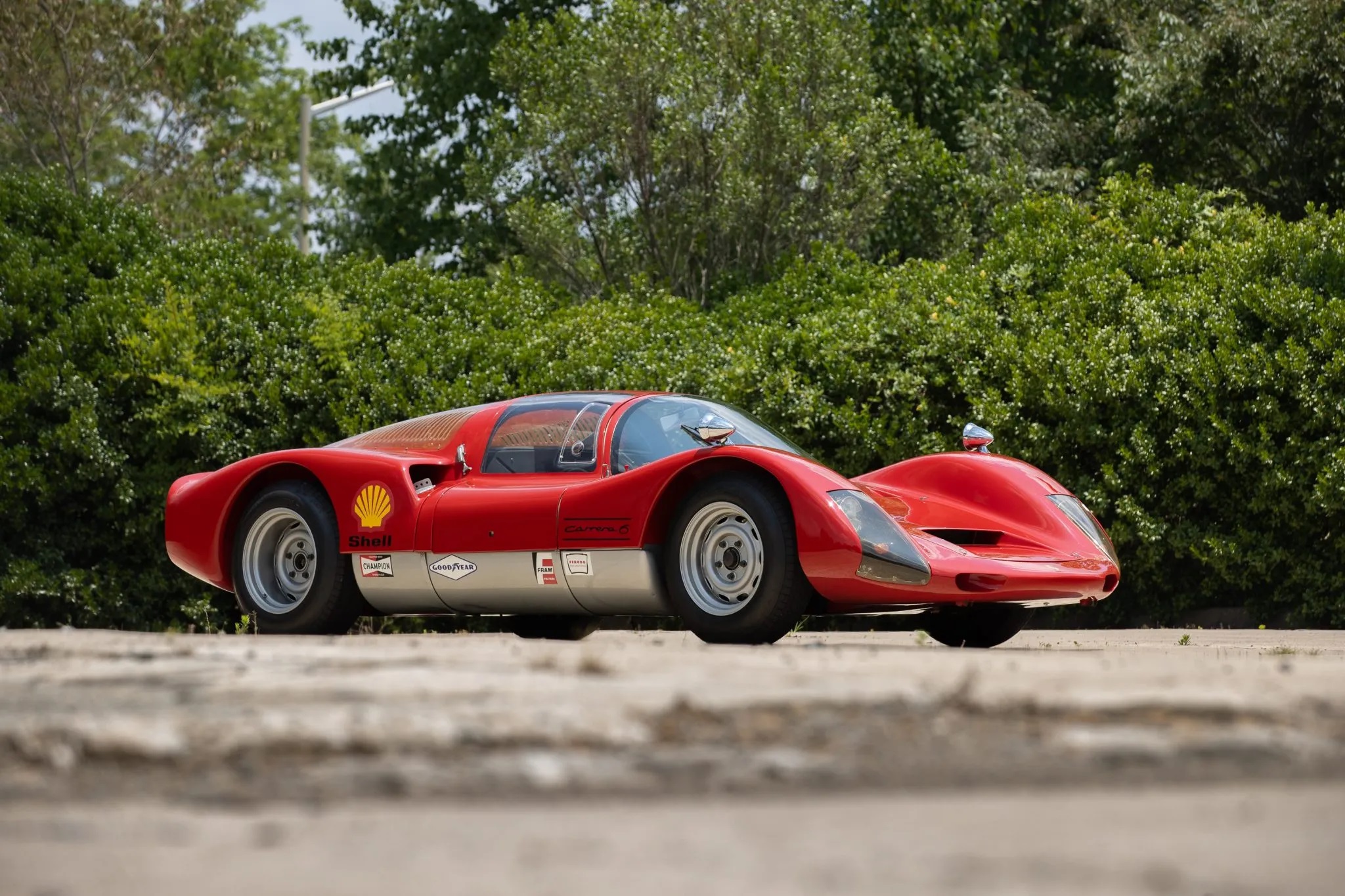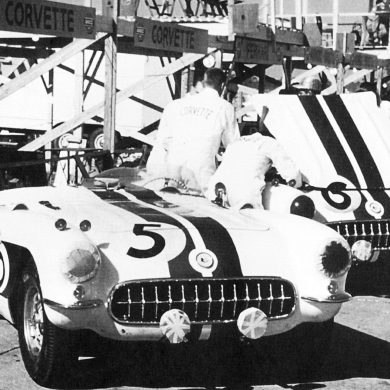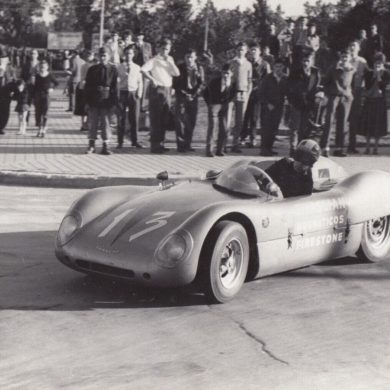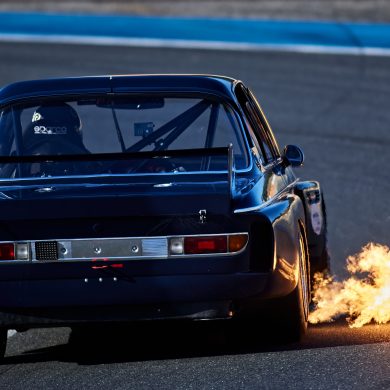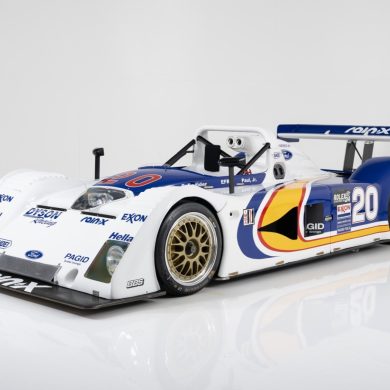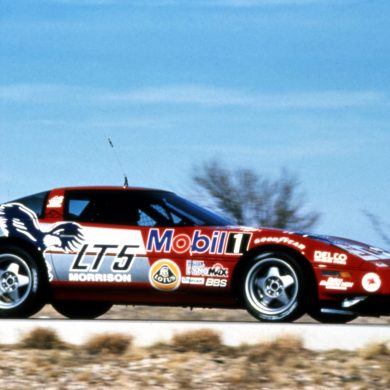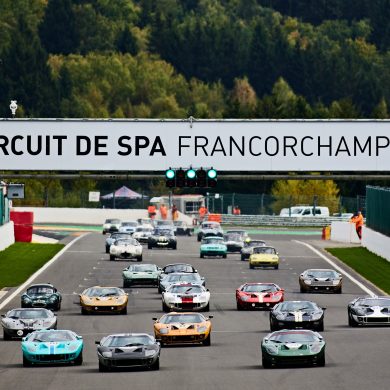The Porsche 906 or Carrera 6 was the last street-legal racing car from Porsche. A total of 65 were produced in 1966, allowing the model to be homologated for FIA’s new Group 4 Sports Car category although the 906 would also compete in modified form in the Group 6 Sports Prototype class.
A successor to the Porsche 904, and designed under Ferdinand Piëch’s new regime at Porsche R&D, the 906 replaced the boxed steel structure of the 904 which used the fiberglass body for extra structural strength with a tubular space frame and unstressed fiberglass body. The fiberglass itself was laid up by hand, producing consistent results, instead of the uneven spraying technique used on the 904.
The result was a car that weighed 1,300 lb, approximately 250 lb lighter than the 904/6. The engine regularly fitted was the 901/20 6-cylinder lightweight racing engine with 220 hp and carburetors, although some examples that were raced by the factory team received fuel injected 8-cylinder engines, especially in hillclimbing events where Porsche competed with Ferrari Dinos for the European championship.
Unlike previous racing Porsches, the 906 body was tested in a wind tunnel, resulting in a top speed of 170 mph at Le Mans, quite fast for a 2-liter engine car. It shows already a close resemblance to future Porsche racing cars. As in the Mercedes-Benz 300SL, gull-wing doors were fitted, and the engine at the rear was covered with a large Plexiglas cover.
In its debut in the 1966 24 Hours of Daytona, the Carrera 6 finished 6th overall, and won its class against Ferrari Dino 206 Ps. At the 12 Hours of Sebring, Hans Herrmann/Gerhard Mitter finished fourth overall and won the class, as at the 1000 km of Monza. The 1000 km at Spa were disappointing, as were the 1000 km Nürburgring where the Dinos were only beaten by the Chevrolet V8-powered Chaparral. A privately entered 906 secured an overall victory at the 1966 Targa Florio when the factory cars failed. At the 1966 24 Hours of Le Mans, the 906 placed 4-5-6-7 behind three Ford GT40 Mk IIs, outlasting all of the previously dominant V12 engined Ferrari Ps.
Photo Source: Bring A Trailer


